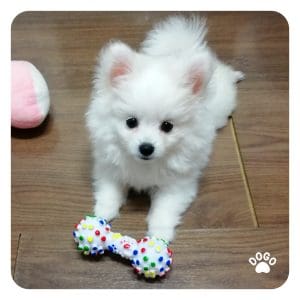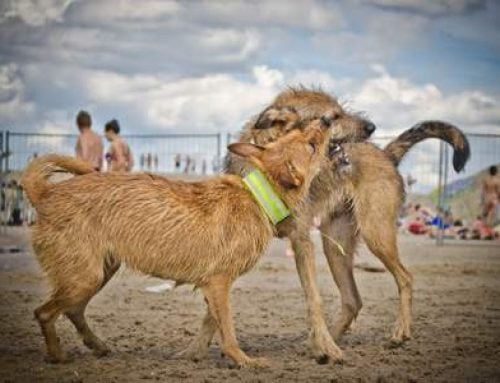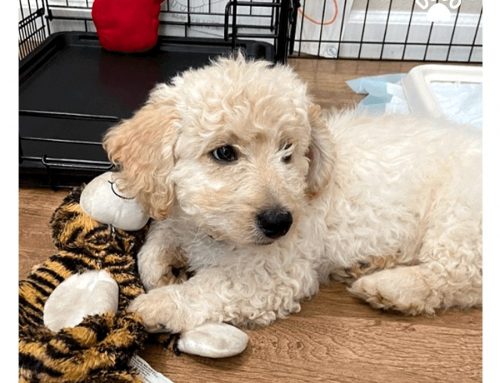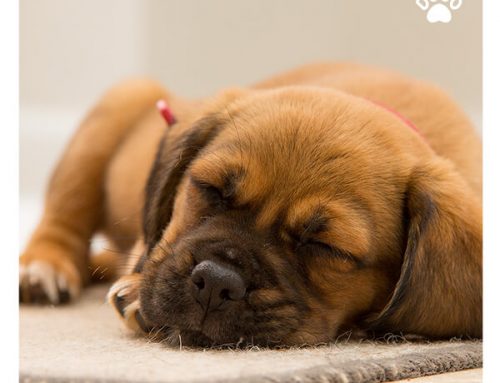Almost every person’s heart melts when they see a cute fluffy puppy with an adorable baby face, soft fur, and delicate paw pads. No wonder that so many people fall for those puppy eyes and under their spell, they decide to adopt the fluffy ball of fur. When they reach home, they suddenly realize how unprepared they are to raise a few weeks old pup. If you’re one of those easily compelled humans, don’t panic. We’re about to point out 5 the most important things you should teach your puppy as soon as possible to provide them the best possible care.
1. Socialize your puppy

Since the moment your puppy is born up to 14 weeks of age, your furry baby is very vulnerable to experiences. The primary socialization window begins to close after this period and the puppy naturally gets more afraid and cautious. So make good use of that crucial couple of weeks to socialize your dog to avoid possible behavioral problems in the future.
2. Leave your puppy home alone
Dogs, similarly to wolves, are born to live in groups. They choose to spend their lives in the company of others of their kind, rather than alone. However, in the human world, domesticated dogs are usually the only fury child in a household. In addition to that, research says that the majority of them are being left at home from 8 to 10 hours a day. We tend to forget that dogs are social animals, they need to interact, either with dogs, humans or other animals. If they are denied that, they can easily develop separation or isolation anxiety.
To avoid the disorder teach your puppy that being alone is not the worst thing in the world. Right after bringing the pup home, arrange a few next days to spend as much time together as possible to make them feel safe and happy in a new home. After a while, try leaving the dog alone playing and sit on the other side of the room, next time leave the pup alone in the room and go to another. Keep increasing the distance between you and their time alone until your dog is relaxed on their own.
You can also try getting your pup used to a puppy crate which is a great tool to provide your dog with a safe, puppy-proofed environment, especially if you have a rambunctious dog, whose energy spills over the top. A puppy crate provides your dog with security, his own safe spot to hide from unwanted guests and to sleep undisturbed.
3. Teach potty training
Potty training is extremely important. You have to show your pup where you expect them to eliminate. Stay consistent and don’t let your pup go to the potty in any other place than desired. The process will require a lot of time and patience but the pup will eventually understand what you’re trying to accomplish. The key is to take the dog out more often than necessary so there will be no space for mistakes. Dogo App gives us an option to set up potty reminders to help you prevent unpleasant accidents at home.
Additionally, encourage the pup to go on different surfaces, otherwise, they can develop substrate preferences. This means that when a dog’s favorite surface won’t be available, they don’t go for potty to an unfamiliar surface.
If you catch your dog making a mistake, don’t punish them. Take them to the right spot immediately. If you react aggressively, the pup might try to hide from you when they’re in need and eliminate secretly somewhere in the house.
4. Provide chewing toys
Puppies are balls of energy and love to destroy and chew everything around them like shoes, clothes, furniture. To avoid the need to say bye to your favorite sneakers, provide your pup variety of chewing toys. This way the pup will find out what he likes to chew the most. Until they discover their preferences, supervise your dog in the house to make sure that they won’t chew or eat anything toxic or dangerous for their health. If you catch your puppy on chewing your valuable item, give them a chewing toy instead. Dogs love chewing the most until they are 1 year old but even after their puppyhood they have a need to chew. So keep your pup’s favorite chewing objects close so they won’t be tempted by your fashionable shoes.
While providing your puppy with chew toys is important for preventing them from destroying your belongings, it’s also important for their dental health. Chewing on toys helps to keep your puppy’s teeth clean and healthy, preventing the buildup of tartar and plaque that can lead to dental problems later in life. Additionally, chewing can help to relieve stress and anxiety, making it an important part of your puppy’s mental health routine.
When choosing chew toys for your puppy, it’s important to choose toys that are appropriate for their age and size. Toys that are too small or too large can pose a choking hazard, while toys that are too hard can damage your puppy’s teeth. Look for toys that are designed specifically for puppies and that are made from safe, non-toxic materials. You may also want to consider toys that are designed to be filled with treats, as this can provide your puppy with extra motivation to chew and play.
Remember to tire your dog mentally and physically to prevent boredom. To satisfy their destructive behaviors, set up situations so they can enjoy themselves, for example playing in stimulating Dogo games like ‘’Destroy the boxes’’.
5. Introduce your puppy to positive training with Dogo
Studies prove that positive reinforcement training is much more effective than methods based on punishment which could eventually harm your dog’s physical or mental health.
Besides, negative training methods mostly teach your dog what not to do to avoid getting punished instead of what is good, desirable behavior.
So what is a positive dog training?
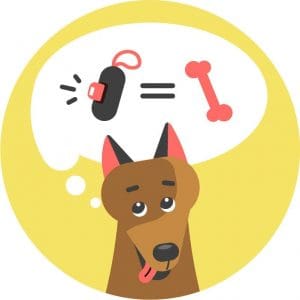
All living creatures tend to repeat behaviors that are encouraged. Therefore there is no better way to start training your pup basic obedience than using positive reinforcement. Reward-based training helps develop good manners in your dog as well as create a strong, happy friendship between you two.
Do you want to teach your pup socialization, potty training, and basic obedience? Enroll in Dogo puppy training! Dogo provides easy guided instructions step by step with constant feedback from professional dog trainers.
Good luck!
Having a wild puppy is quite a challenge but also lots of happiness and endless joy. At first, you might feel overwhelmed with the responsibility. However, if you take this experience patiently, put time and effort into your dog’s right development, you will get rewarded in the future with a good behaving, loving, devoted life companion.



